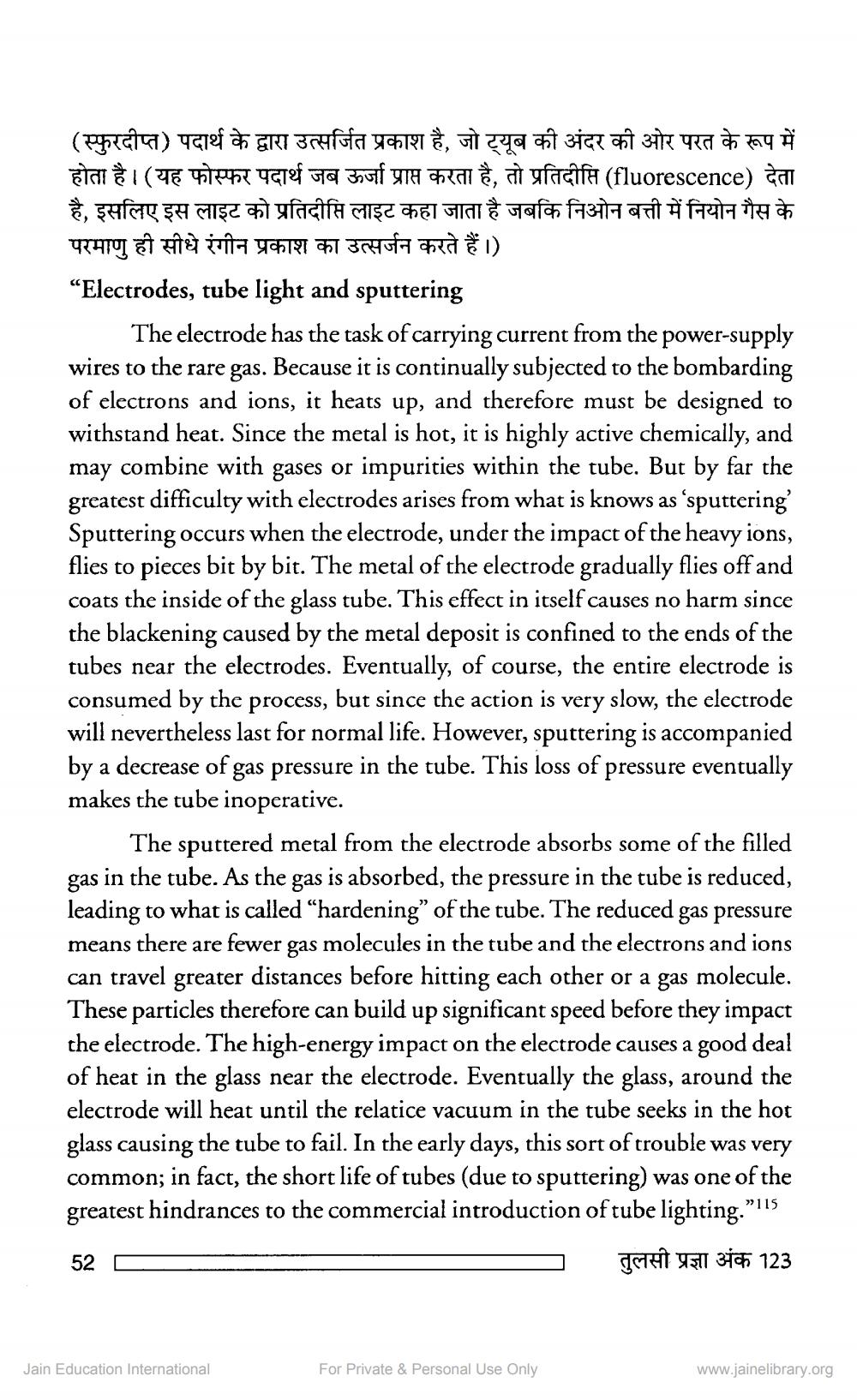________________
(स्फुरदीप्त) पदार्थ के द्वारा उत्सर्जित प्रकाश है, जो ट्यूब की अंदर की ओर परत के रूप में ETAT (TEPAT Taref Ha Bouf yra antè, a ufasifH (fluorescence) dan है, इसलिए इस लाइट को प्रतिदीप्ति लाइट कहा जाता है जबकि निओन बत्ती में नियोन गैस के परमाणु ही सीधे रंगीन प्रकाश का उत्सर्जन करते हैं।) “Electrodes, tube light and sputtering
The electrode has the task of carrying current from the power-supply wires to the rare gas. Because it is continually subjected to the bombarding of electrons and ions, it heats up, and therefore must be designed to withstand heat. Since the metal is hot, it is highly active chemically, and may combine with gases or impurities within the tube. But by far the greatest difficulty with electrodes arises from what is knows as 'sputtering Sputtering occurs when the electrode, under the impact of the heavy ions, flies to pieces bit by bit. The metal of the electrode gradually flies off and coats the inside of the glass tube. This effect in itself causes no harm since the blackening caused by the metal deposit is confined to the ends of the tubes near the electrodes. Eventually, of course, the entire electrode is consumed by the process, but since the action is very slow, the electrode will nevertheless last for normal life. However, sputtering is accompanied by a decrease of gas pressure in the tube. This loss of pressure eventually makes the tube inoperative.
The sputtered metal from the electrode absorbs some of the filled gas in the tube. As the gas is absorbed, the pressure in the tube is reduced, leading to what is called “hardening” of the tube. The reduced gas pressure means there are fewer gas molecules in the tube and the electrons and ions can travel greater distances before hitting each other or a gas molecule. These particles therefore can build up significant speed before they impact the electrode. The high-energy impact on the electrode causes a good deal of heat in the glass near the electrode. Eventually the glass, around the electrode will heat until the relatice vacuum in the tube seeks in the hot glass causing the tube to fail. In the early days, this sort of trouble was very common; in fact, the short life of tubes (due to sputtering) was one of the greatest hindrances to the commercial introduction of tube lighting."115
- THI THI + 123
52
-
Jain Education International
For Private & Personal Use Only
www.jainelibrary.org




